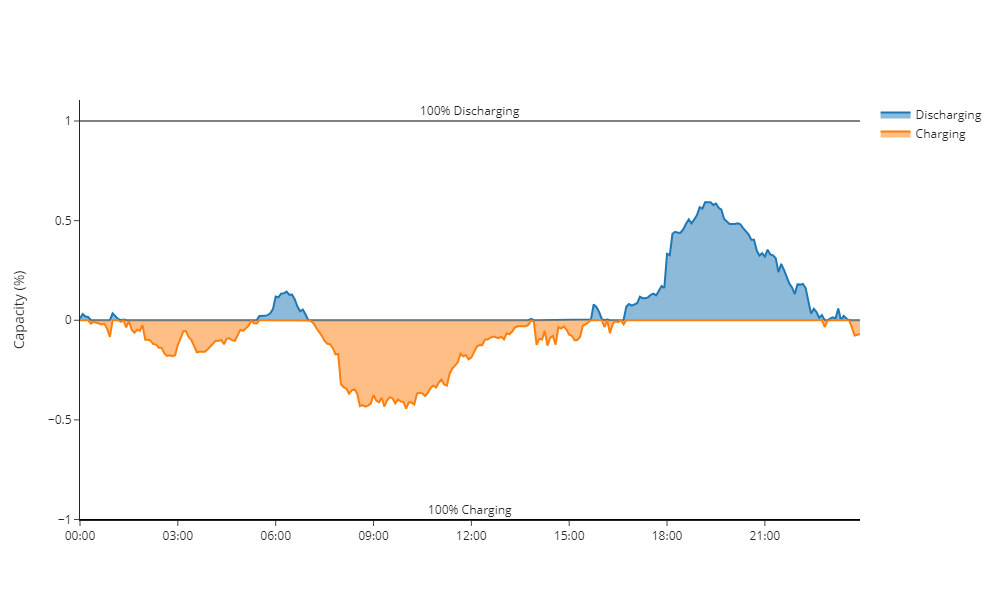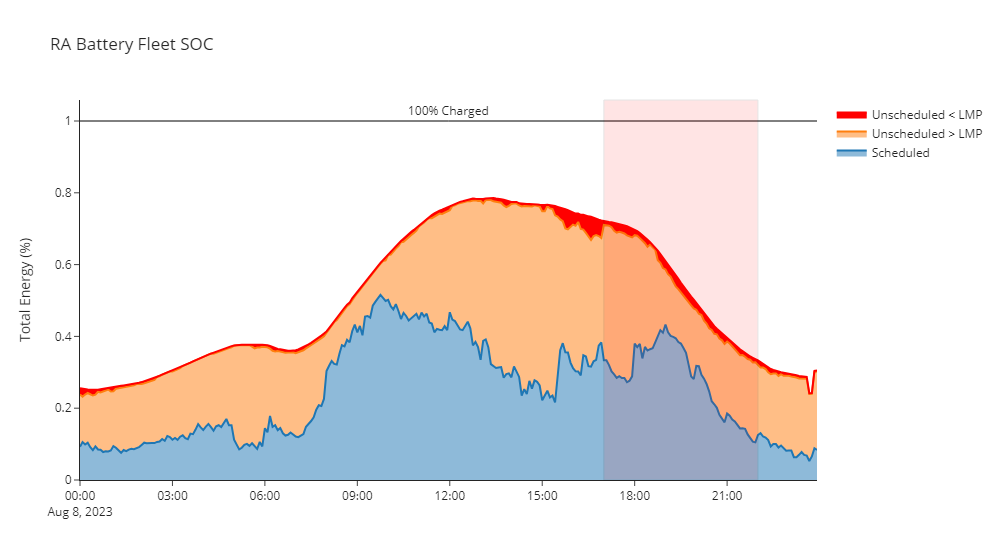1.
Provide your organization’s comments on the review of problem statement 2 and 3 stakeholder feedback:
The text of DMM's full set of comments is pasted into this response to question #1. A fully formatted version of the same comments is included as a pdf attachment below the final question.
Comments on Resource Adequacy Modeling and Program Design
January 16, 2024 Working Group
Department of Market Monitoring
January 30, 2024
The Department of Market Monitoring (DMM) appreciates the opportunity to comment on the Resource Adequacy Modeling and Program Design January 16, 2024 Working Group.[1] DMM supports the developments and stakeholder engagement in the working group process.
DMM supports the overarching goal that resource adequacy (RA) enhancements should improve the economic incentives for individual participants to procure sufficient capacity, and make this capacity operationally available to the ISO markets. Some of the areas in which incentives can be improved include: (1) the use of forced outages in place of planned outages, and (2) incentivizing resource availability, and aligning resource capacity accounting with availability. DMM also recommends the ISO assess the availability of storage resources, and implications for resource availability during stressed grid conditions. This assessment should include, but is not limited to, the role ISO market design may play in storage availability.
Planned to forced outages
The working group discussion of planned and forced outages, and their requirements for substitution capacity, did not raise the issue that forced outages are not examined by ISO operators as much as planned outages. As discussed in the working group, all planned outages without substitute capacity are automatically denied. The tariff, however, does not have the same mechanism for forced outages. When approving forced outages, ISO operators may not be able to discern whether the outage is required for immediate plant operation, or whether the outage could be delayed. The use of a forced outage does not inherently convey urgency. Forced outages are defined only as outages that are taken seven or fewer days from the start of the outage.
Forced outages requested within seven days of the start of the outage can lead to local or system instabilities and affect overall reliability. Therefore, if the outage involves discretionary maintenance, it is important the resource scheduling coordinator clearly identify it as such. DMM recommends the ISO enhance outage reporting requirements to more clearly require the resource scheduling coordinator to identify if a forced outage is necessary immediately for plant operation, or if the forced outage is for discretionary plant maintenance that could be postponed in the case of imminent system reliability concerns. In addition, as discussed below, increased penalties for outages should further increase the incentive of resources to perform when needed for reliability.
Resource availability and performance, and an unforced capacity framework
CAISO’s resource availability incentives currently fall under the resource adequacy availability incentive mechanism (RAAIM). However, the ISO and the California Public Utility Commission (CPUC) are in discussion to develop an unforced capacity framework (UCAP). DMM sees both of these policies as complementary, and recommends their enhancement and development.
DMM has long reported on, and suggested, a modified definition of availability be used in the ISO market for RA resources that is both consistent with RAAIM and UCAP.[2] This potential measure of availability would use bids in the day-ahead and real-time markets for RA resources with must offer obligations (MOO). This measure would incorporate outages, derates, and each resource’s ability to feasibly respond to a schedule from their submitted bids. This quantitative method can also create the baseline for resources in a UCAP framework and the RAAIM availability band.
DMM reports show that in 2022, resources with an RA MOO had an average capacity derate to 91 percent of their nameplate capacity during Energy Emergency Alert hours, or hours of more stressed grid conditions (EEA+ hours).[3] The EEA+ hours are chosen to reflect when capacity is of the utmost importance to the system, and during conditions correlated with increased ambient derates and additional constraining operations of RA resources to provide system and local reliability. [4]
The adoption of UCAP creates a level playing field in the RA valuation of resources to meet stressed grid conditions. DMM has recommended creating performance standards in place of availability standards, and believes this would further enhance planning and grid operations.[5], [6], [7] However, DMM recognizes that performance standards are not within the scope of discussion for this stakeholder process. In place of that, the UCAP framework and increased RAAIM payments alone will enhance resource accounting, availability, and performance.
One consideration DMM makes in suggesting the UCAP framework is that it will require recalculating the planning reserve margin (PRM). DMM does not take this lightly, but in the long-term, equal resource valuation based on availability or performance creates a more fungible market across all resource types to ensure reliability.
Lastly, DMM has long supported enhancing the calculation of the capacity procurement mechanism (CPM) soft offer cap.[8] We understand this will occur in a parallel initiative, but want to reiterate our support for the initiative. Currently, the maximum possible monthly penalties and availability incentives are set at half of the CPM price, which is the ISO’s backstop procurement mechanism. As capacity becomes more limited and prices increase, the difference between capacity payments and RAAIM penalties also increase. DMM is concerned that the penalties have become insignificant compared to RA payments. The RAAIM adjustment alone could better incentivize suppliers to sell highly available and dependable capacity up front.
Energy and resource adequacy with storage resources
As presented in the working group meeting, DMM has questions about the availability of storage resources during stressed grid conditions. The availability of storage capacity has two different dimensions: (1) resource availability after considering outages or derates, and (2) state-of-charge availability, or ability to cycle, with respect to observable or unobservable constraints in the market. DMM had observed that a significant portion of storage resources may not be positioned to provide their full capacity and duration during critical periods.
Within DMM’s availability accounting framework using bid in capacity, it has been found that during stressed grid conditions in 2023, storage has an average RA fleet-wide derate around 88 percent to 90 percent of the full RA capacity.[9],[10] DMM’s analysis shows that during this period the average does not vary much across days, or during the availability assessment hours (AAHs).[11] In this context, defining availability as being available to meet reliability needs after considering outages and derates, the average availability is about 89 percent across the AHHs. Availability varies between 87 percent and 90 percent.
To assess reliability, DMM’s analysis has focused on the ability of storage resources to cycle and provide their RA value. Figure 1 averages the fleet’s charging and discharging during the RMO+ days. RMO+ days are restricted maintenance operations (RMO) days, or days with expected tighter grid conditions, i.e. EEA days. DMM finds peak charging is approximately 40 percent of the RA fleet, while discharge is 50 percent. Below addresses potential reasons why the system is not seeing closer to 100 percent of the capacity.
In addition to calculating a fleet-wide fleet average, DMM also examined the RMO+ days individually at the fleet and resource levels. This review found that, on average, the RA fleet is cycling approximately 55 percent, with an average of 30 percent state-of-charge (SOC) remaining at the end of the day. DMM did find a large degree of heterogeneity across the fleet, whereby some resources are cycling more than one full cycle during the day, while others are hardly cycling. The extremes are not the dominant behavior of the fleet, and results can be found in the footnoted reference.[12]
Figure 1. Average RMO+ capacity utilization for the storage RA fleet

Storage cycling, or capacity utilization, is only part of battery availability. Hypothetically, storage resources may not have been needed by the system, but were still 100 percent available if needed. Figure 2 modifies the analysis to the RA fleet’s SOC to discern fleet availability to meet the four-hour discharge and deliverability requirement to qualify as RA capacity. Figure 2 is the average SOC of the storage RA fleet over the RMO+ days in 2023.
The fleet’s SOC is represented by the upper line of the orange and red. On average, the SOC peaks at approximately 80 percent, and ends the day around 35 percent. In blue is the percentage of the SOC that is scheduled in that RTD interval. At its peak during the AAHs, only 70 percent of the remaining SOC is scheduled, or 43 percent of the RA fleet’s SOC. These data suggest that the RA storage fleet is not positioned to provide its full RA capacity during stressed grid conditions. DMM is concerned that this disconnect between storage RA capacity and observed availability may have reliability implications.
Figure 2. Average RMO+ state-of-charge for the storage RA fleet

DMM understands there are many limitations on the storage fleet, and has published a report on the battery fleet in 2023 with further detail. In short, DMM believes the full potential of RA storage resources is not being met because of a combination of issues:
- limitations in the market, such as state-of-charge constraints and charge limits;
- limitations not observable in the market model, such as cell balancing needs and foldback around the SOC extremes; and
- bidding behavior, market rules, and system operation needs.[13]
Finally, DMM notes that storage is commonly used to provide ancillary services (AS). This can limit the availability of storage resources for good reason, but this limitation should be taken into account when considering RA storage resources’ potential to provide energy during critical periods.
DMM recommends the ISO and stakeholders further study limitations in the RA storage fleet and address these issues in a future storage enhancements proceeding.
[1] Resource Adequacy Modeling and Program Design – Working Group Meeting, CAISO, January 16, 2023 [sic]: https://www.caiso.com/InitiativeDocuments/Presentation-ResourceAdequacyModeling-ProgramDesignWorkingGroup-Jan162024.pdf
[2] This is the most recent report, but it includes DMM’s measure of availability accounting: 2022 Annual Report on Market Issues and Performance, CAISO DMM, July 11, 2023, p 249: https://www.caiso.com/Documents/2022-Annual-Report-on-Market-Issues-and-Performance-Jul-11-2023.pdf
[3] Ibid.
[4] This measure is imperfect because there is heterogeneity across resource and fuel types, which must be considered, and there is also heterogeneity within types. Insofar as there is clear definition and regulatory certainty to capacity valuation and RAAIM payments, DMM supports further separation within type.
[5] 2022 Annual Report on Market Issues and Performance, CAISO DMM, July 11, 2023, p 249: https://www.caiso.com/Documents/2022-Annual-Report-on-Market-Issues-and-Performance-Jul-11-2023.pdf
[6] Comments by Department of Market Monitoring on Resource Adequacy Enhancements Issue Paper, CAISO DMM, November 30, 2018: http://www.caiso.com/InitiativeDocuments/DMMComments-ResourceAdequacyEnhancements-IssuePaper.pdf
[7] Comments by Department of Market Monitoring on Resource Adequacy Enhancements, CAISO DMM, October 20, 2023: https://stakeholdercenter.caiso.com/Comments/AllComments/5860a092-9299-4cf2-a3f7-60efa5105b32 - org-bde68f42-bf0e-4842-b152-d0cc02a2140e
[8] Comments by Department of Market Monitoring on Resource Adequacy Enhancements Issue Paper, CAISO DMM, November 30, 2018: http://www.caiso.com/InitiativeDocuments/DMMComments-ResourceAdequacyEnhancements-IssuePaper.pdf
[9] Due to few EEA+ days in 2023, in this analysis DMM is using restricted maintenance operation (RMO) hours, or more stressed conditions, which we refer to as RMO+ hours, and this includes any days that were declared RMO or EAA+.
[10] DMM has found that, on average, storage resources are on outage/derate 88 percent of their RA capacity, but are bidding 90 percent of capacity: Resource Adequacy Modeling and Program Design – Working Group Meeting, CAISO, January 16, 2023 [sic], slides 71 and 74: https://www.caiso.com/InitiativeDocuments/Presentation-ResourceAdequacyModeling-ProgramDesignWorkingGroup-Jan162024.pdf
[11] Resource Adequacy Modeling and Program Design – Working Group Meeting, CAISO, January 16, 2023 [sic], slide 75: https://www.caiso.com/InitiativeDocuments/Presentation-ResourceAdequacyModeling-ProgramDesignWorkingGroup-Jan162024.pdf
[12] Resource Adequacy Modeling and Program Design – Working Group Meeting, CAISO, January 16, 2023 [sic], slides 80 and 81: https://www.caiso.com/InitiativeDocuments/Presentation-ResourceAdequacyModeling-ProgramDesignWorkingGroup-Jan162024.pdf
[13] Special Report on Battery Storage, CAISO DMM, July 7, 2023: https://www.caiso.com/Documents/2022-Special-Report-on-Battery-Storage-Jul-7-2023.pdf